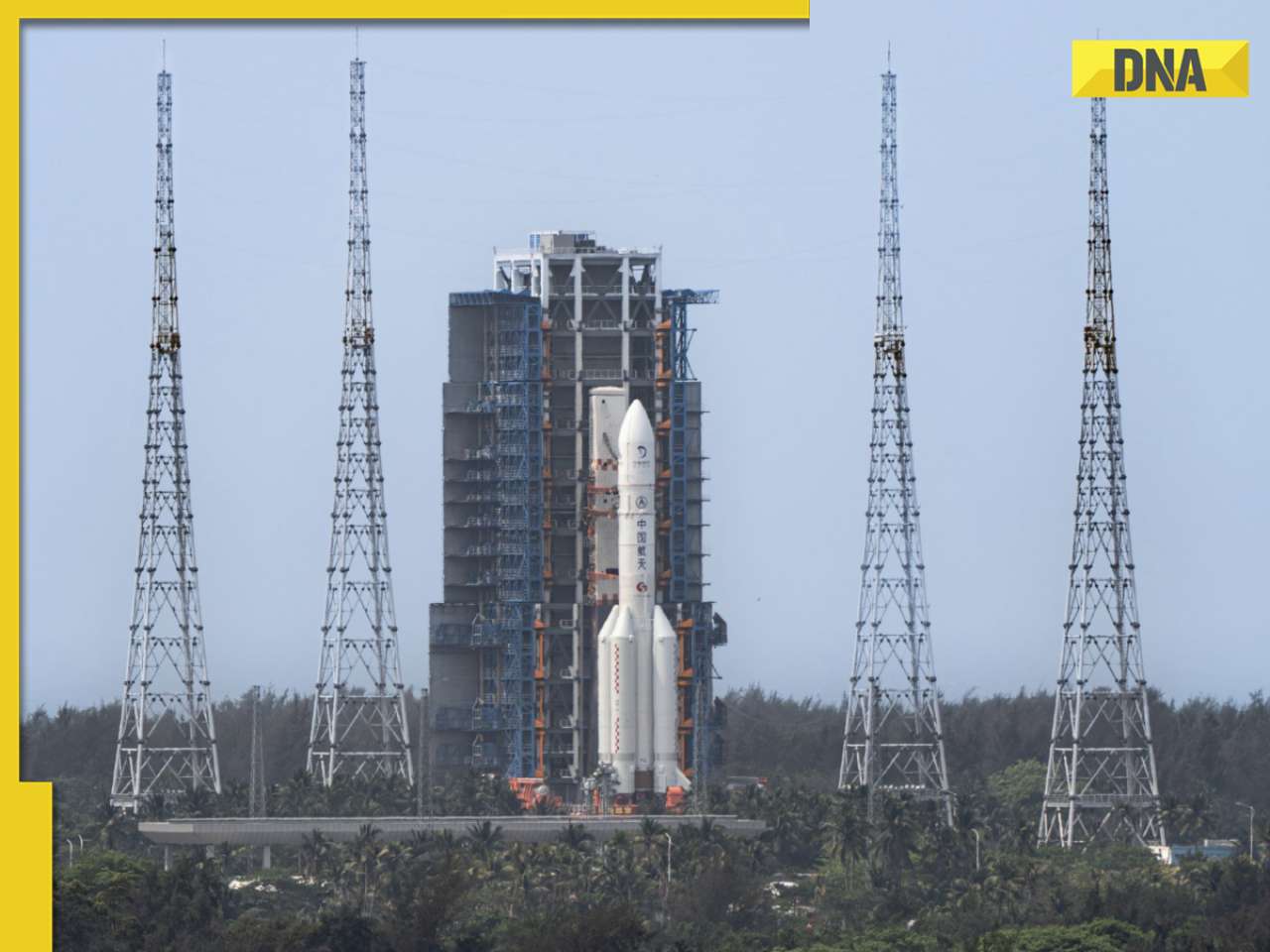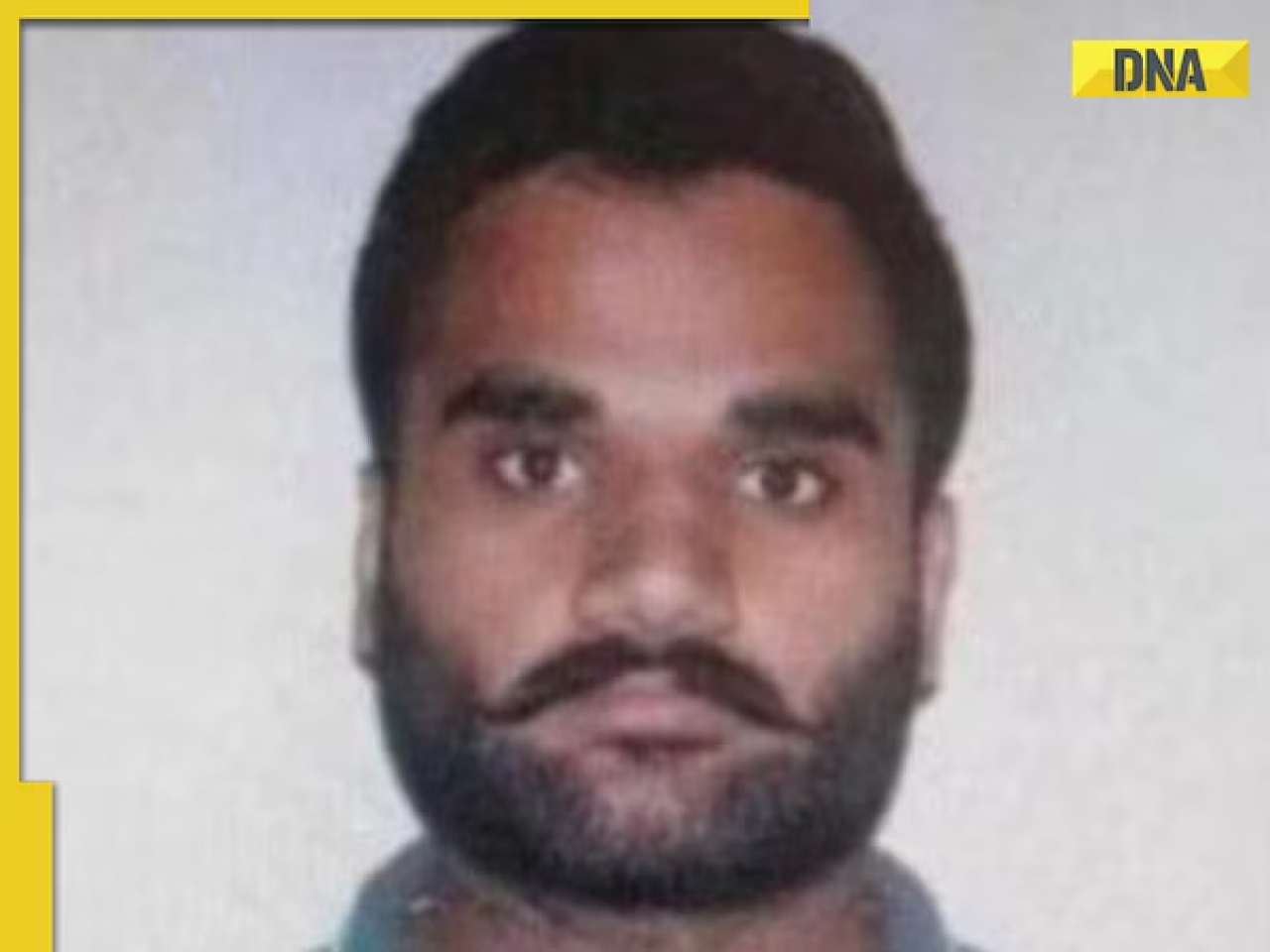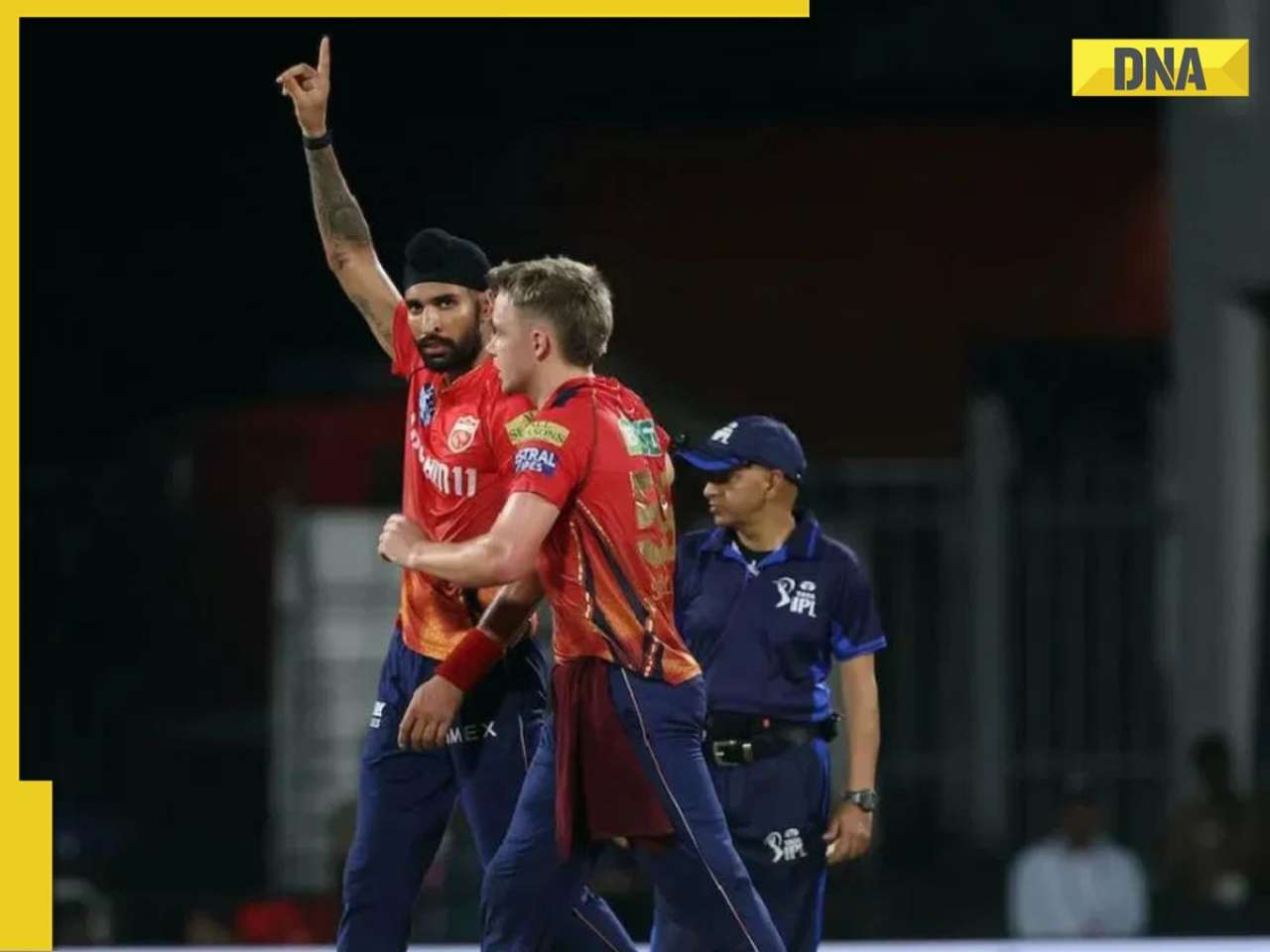After taking heavy losses following Reliance Jio's entry, the incumbent telecom are now striking back. Airtel is deploying innovative strategies and even micromanaging to protect and grow its 4G user base. Will it be able to stand up to the might of Jio?
The consumption of high-speed mobile data in India has hit the roof. But do you know 80% of 4G traffic comes from just 200 districts of the 700-plus districts in the country?
This is just one of the several data being used by Airtel, once the country's largest telecom player, as it strives to regain its lost ground in the highly-competitive mobile market.
The micro approach - where Airtel's focus is not only at the district level but even a level below - means the company is monitoring its investments and performance at tehsil/block levels. So, for 200 districts, the target is to tap 770 blocks.
Slowly and steadily, the Sunil Mittal-owned Airtel is scripting a comeback. The telecom sector has been reeling under financial constraints since the entry of Reliance Jio. The shock waves are still being felt even after over two years of Jio's entry. In Q3 FY2019, Vodafone Idea posted a loss of about Rs 5,005 crore, while Airtel posted a 72% decline in profits and Reliance Communications knocked the doors of NCLT for insolvency, the second telecom firm to do so in recent times. However, Reliance Jio has managed to turn profitable in just two years of its operations.
Though Airtel has been able to maintain its revenue share at 32-33% all this while, it has decided to fight on the front foot with data analytics being the core of decision making.
CHASING REVENUES
To cut down costs and increase revenues, Airtel chalked out a three-pronged strategy in November last year. The company launched a minimum average revenue per user (ARPU) plan for lower strata of its users. This led to a churn of 48.5 million users in the third quarter taking a total user base to 284 million but improved its average revenue per user. This apart, the company added 11 million new 4G users with monthly data consumption per user reaching 10.5 GB.
Secondly, it raised tariffs for few of its plans like for instance, the 149 plan with 1 GB per day has been revised to Rs 169 with 1 GB per day. Third, it has been relying on content to drive up trading. The bulk of exclusive shows and content available on Zee5 and others are available for a minimum of over Rs 99.
"The investment is far more targeted and far more scientific. A big theme for Airtel in the next few years is to make this business very simple. The idea is to digitise and simplify the whole business, enabling faster decision making," said a senior Airtel executive.
Airtel has deployed advanced network technologies and tools such as pre-5G massive MIMO and 4G advanced carrier aggregation to step up its high-speed network capacity and coverage. It is also refarming its spectrum in 900 Mhz and 2100 Mhz. Airtel's 4G subscriber base stands at 77 million, which is 27% of its total subscribers at 284 million.

But, will this strategy sustain against the aggressive competition from Reliance Jio? Mahesh Uppal, a telecom expert, says the revival in the telecom sector is a bit of question mark as things are still pretty rough.
"It will be difficult for Airtel or Vodafone Idea to survive simply as a carrier of communication service for delivering calls or data... that plain vanilla business is under major threat as prices have crashed. Operators lack pricing powers. If you raise tariffs, you will become uncompetitive," he said.
DATA CONSUMPTION – SILVER LINING
There is a massive surge in data consumption, with the main driver being videos on over the top (OTT) players. The mobile data traffic in India grew 109% in 2018, with 4G alone contributing 92%. The average data usage grew by 69% in 2018 to touch 10GB a user per month in December, as per Nokia's annual Mobile Broadband India Traffic (MBiT) Index released last week.
The total number of 4G mobile user stands at 432 million, a 147% jump compared to 2017. However, the current broadband penetration is around 45%, which is at a much lower level compared to China at 72% and other European nations at around 85-95%.
GREEN SHOOTS
Airtel and Vodafone Idea have started seeing green shoots after weeding out low-end users but tariff hikes remain key for growth, say analysts, while bundled offers driving data usage are expected to improve revenues.
The key for Bharti going forward is the improvement in pricing, which still remains elusive. Jio has indicated that it does not feel a need to change Arpu currently. "We expect competitive intensity in India business - mobile, home and enterprise - to remain high over the next six-nine months. Further, investments in network and add-on services to continue which will partly offset cost rationalisations," analysts at Jefferies said recently.
For Airtel, in the third quarter ended December, the data usage per user increased to 10.5 GB versus 9.2 GB in Q2 and is now almost at par with Jio's 10.8 GB.
"The industry revenues have now flattened, and from here on if you deliver a better experience, actually, you can start generating a little bit more (revenues). That's why we did some experiments in November, December to prove that and we were quite encouraged by what we see. The larger point is that the overall data structure needs to change so that the industry goes back to $35 to $50 billion in terms of revenues," the Airtel executive said.
But, it doesn't mean that pricing can go up big time, because you still need to be competitive in the marketplace. "We really need to win the 4G game, which is high-value customer game through a combination of the right propositions, the right content deals, price increase where ever possible. We don't mind actually losing customers at the bottom as ultimately it will pay off in terms of revenue. Airtel will be a more aspirational brand which will propel the shift from feature phones to smartphones," the executive said.
Reliance Jio has already made it clear that it is unlikely to go for any tariff hike till it reaches 400 million subscriber base from current 280 million.
Ashish Sharma, a telecom industry leader for PwC, says the industry should get used to the current level of tariffs in near future and reorient their cost structure around it.
CONTENT – THE FUTURE
While Airtel has set up a separate company with content from third-party aggregators and has tie-ups with Netflix, Amazon and Zee5, Reliance Jio has bought out music app Saavn, offers content through Jio Cinema – some of the content is from Reliance-owned Viacom, and from ALT Balaji and Eros where it has stakes as well.
"The actual battle is between Airtel and Reliance Jio. Vodafone Idea is way behind both of them in terms of 4G network. Though it has recently awarded deals for deploying 5G ready equipment, it will take time for Vodafone Idea to catch up as it awaits funding from a rights issue," an analyst based in Mumbai said.
"Content of all forms is one of the most important consumer application. It will only achieve greater relevance as we move ahead. However, there are two support systems that have created artificial demand. One is, the abnormally low data cost and second is that most of these services are either free or at a very nominal price. For instance, Amazon Prime membership," Faisal Kawoosa, founder of consulting firm TechArc, said.
OTT industry in India is expected to reach a size of $5 billion by 2023, as per the findings of a report by The Boston Consulting Group titled 'Entertainment Goes Online'. Rural areas will play a big role in OTT consumption. About 48% of India's internet users (around 650 million by 2023) are expected to be from rural areas. "With increasing mobile penetration in Tier 3, Tier 4 and rural areas, there will be many consumers who will be OTT first, who have never consumed content on TV."
CHALLENGES
"It will be fair to say that Airtel is under pressure. Time will tell whether it will emerge successfully out of this. However, Airtel is definitely better placed than Vodafone Idea to survive this tide," Uppal said.
The cumulative debt of the industry remains high at Rs 7 lakh crore. Continuous investment in their networks has become difficult for Airtel as well Vodafone Idea, which is still in the process of integrating the two networks.
Airtel and Vodafone Idea have also hived off their fibre assets, 246,000 route km and 156,000 route km respectively, into separate units. While Vodafone Idea plans to monetise the fibre assets, Airtel is looking to form an independent fibre company and could also monetise its holdings in the unit.
Vodafone Idea's integration is progressing at a slower than expected pace and could take at least a year for its network coverage to improve, a recent note by Bank of America Lynch said, which is likely to be an opportunity to both Jio/Bharti to gain market share from Vodafone Idea.
Despite the hurdles, Airtel is confident of moving ahead of Vodafone Idea in the next 3-6 months.
Only time can tell, whether Airtel will be able to survive the Jio tide or not.
![submenu-img]() Big update on Pakistan's first-ever Moon mission and it has this China connection...
Big update on Pakistan's first-ever Moon mission and it has this China connection...![submenu-img]() 2024 Maruti Suzuki Swift officially teased ahead of launch, bookings open at price of Rs…
2024 Maruti Suzuki Swift officially teased ahead of launch, bookings open at price of Rs…![submenu-img]() 'Kyun bhai kyun?': Sheezan Khan slams actors in Sanjay Leela Bhansali's Heeramandi, says 'nobody could...'
'Kyun bhai kyun?': Sheezan Khan slams actors in Sanjay Leela Bhansali's Heeramandi, says 'nobody could...'![submenu-img]() Meet Jai Anmol, his father had net worth of over Rs 183000 crore, he is Mukesh Ambani’s…
Meet Jai Anmol, his father had net worth of over Rs 183000 crore, he is Mukesh Ambani’s…![submenu-img]() Shooting victim in California not gangster Goldy Brar, accused of Sidhu Moosewala’s murder, confirm US police
Shooting victim in California not gangster Goldy Brar, accused of Sidhu Moosewala’s murder, confirm US police![submenu-img]() DNA Verified: Is CAA an anti-Muslim law? Centre terms news report as 'misleading'
DNA Verified: Is CAA an anti-Muslim law? Centre terms news report as 'misleading'![submenu-img]() DNA Verified: Lok Sabha Elections 2024 to be held on April 19? Know truth behind viral message
DNA Verified: Lok Sabha Elections 2024 to be held on April 19? Know truth behind viral message![submenu-img]() DNA Verified: Modi govt giving students free laptops under 'One Student One Laptop' scheme? Know truth here
DNA Verified: Modi govt giving students free laptops under 'One Student One Laptop' scheme? Know truth here![submenu-img]() DNA Verified: Shah Rukh Khan denies reports of his role in release of India's naval officers from Qatar
DNA Verified: Shah Rukh Khan denies reports of his role in release of India's naval officers from Qatar![submenu-img]() DNA Verified: Is govt providing Rs 1.6 lakh benefit to girls under PM Ladli Laxmi Yojana? Know truth
DNA Verified: Is govt providing Rs 1.6 lakh benefit to girls under PM Ladli Laxmi Yojana? Know truth![submenu-img]() Remember Heyy Babyy's cute 'Angel' Juanna Sanghvi? 20 year-old looks unrecognisable now, fans say 'her comeback will...'
Remember Heyy Babyy's cute 'Angel' Juanna Sanghvi? 20 year-old looks unrecognisable now, fans say 'her comeback will...'![submenu-img]() In pics: Arti Singh stuns in red lehenga as she ties the knot with beau Dipak Chauhan in dreamy wedding
In pics: Arti Singh stuns in red lehenga as she ties the knot with beau Dipak Chauhan in dreamy wedding![submenu-img]() Actors who died due to cosmetic surgeries
Actors who died due to cosmetic surgeries![submenu-img]() See inside pics: Malayalam star Aparna Das' dreamy wedding with Manjummel Boys actor Deepak Parambol
See inside pics: Malayalam star Aparna Das' dreamy wedding with Manjummel Boys actor Deepak Parambol ![submenu-img]() In pics: Salman Khan, Alia Bhatt, Rekha, Neetu Kapoor attend grand premiere of Sanjay Leela Bhansali's Heeramandi
In pics: Salman Khan, Alia Bhatt, Rekha, Neetu Kapoor attend grand premiere of Sanjay Leela Bhansali's Heeramandi![submenu-img]() DNA Explainer: Why Harvey Weinstein's rape conviction was overturned, will beleaguered Hollywood mogul get out of jail?
DNA Explainer: Why Harvey Weinstein's rape conviction was overturned, will beleaguered Hollywood mogul get out of jail?![submenu-img]() What is inheritance tax?
What is inheritance tax?![submenu-img]() DNA Explainer: What is cloud seeding which is blamed for wreaking havoc in Dubai?
DNA Explainer: What is cloud seeding which is blamed for wreaking havoc in Dubai?![submenu-img]() DNA Explainer: What is Israel's Arrow-3 defence system used to intercept Iran's missile attack?
DNA Explainer: What is Israel's Arrow-3 defence system used to intercept Iran's missile attack?![submenu-img]() DNA Explainer: How Iranian projectiles failed to breach iron-clad Israeli air defence
DNA Explainer: How Iranian projectiles failed to breach iron-clad Israeli air defence![submenu-img]() 'Kyun bhai kyun?': Sheezan Khan slams actors in Sanjay Leela Bhansali's Heeramandi, says 'nobody could...'
'Kyun bhai kyun?': Sheezan Khan slams actors in Sanjay Leela Bhansali's Heeramandi, says 'nobody could...'![submenu-img]() Meet actress who once competed with Aishwarya Rai on her mother's insistence, became single mother at 24, she is now..
Meet actress who once competed with Aishwarya Rai on her mother's insistence, became single mother at 24, she is now..![submenu-img]() Makarand Deshpande says his scenes were cut in SS Rajamouli’s RRR: ‘It became difficult for…’
Makarand Deshpande says his scenes were cut in SS Rajamouli’s RRR: ‘It became difficult for…’![submenu-img]() Meet 70s' most daring actress, who created controversy with nude scenes, was rumoured to be dating Ratan Tata, is now...
Meet 70s' most daring actress, who created controversy with nude scenes, was rumoured to be dating Ratan Tata, is now...![submenu-img]() Meet superstar’s sister, who debuted at 57, worked with SRK, Akshay, Ajay Devgn; her films earned over Rs 1600 crore
Meet superstar’s sister, who debuted at 57, worked with SRK, Akshay, Ajay Devgn; her films earned over Rs 1600 crore![submenu-img]() IPL 2024: Spinners dominate as Punjab Kings beat Chennai Super Kings by 7 wickets
IPL 2024: Spinners dominate as Punjab Kings beat Chennai Super Kings by 7 wickets![submenu-img]() Australia T20 World Cup 2024 squad: Mitchell Marsh named captain, Steve Smith misses out, check full list here
Australia T20 World Cup 2024 squad: Mitchell Marsh named captain, Steve Smith misses out, check full list here![submenu-img]() SRH vs RR, IPL 2024: Predicted playing XI, live streaming details, weather and pitch report
SRH vs RR, IPL 2024: Predicted playing XI, live streaming details, weather and pitch report![submenu-img]() SRH vs RR IPL 2024 Dream11 prediction: Fantasy cricket tips for Sunrisers Hyderabad vs Rajasthan Royals
SRH vs RR IPL 2024 Dream11 prediction: Fantasy cricket tips for Sunrisers Hyderabad vs Rajasthan Royals ![submenu-img]() IPL 2024: Marcus Stoinis, Mohsin Khan power Lucknow Super Giants to 4-wicket win over Mumbai Indians
IPL 2024: Marcus Stoinis, Mohsin Khan power Lucknow Super Giants to 4-wicket win over Mumbai Indians![submenu-img]() Viral video: Man's 'peek-a-boo' moment with tiger sends shockwaves online, watch
Viral video: Man's 'peek-a-boo' moment with tiger sends shockwaves online, watch![submenu-img]() Viral video: Desi woman's sizzling dance to Jacqueline Fernandez’s ‘Yimmy Yimmy’ burns internet, watch
Viral video: Desi woman's sizzling dance to Jacqueline Fernandez’s ‘Yimmy Yimmy’ burns internet, watch![submenu-img]() Viral video: Men turn car into mobile swimming pool, internet reacts
Viral video: Men turn car into mobile swimming pool, internet reacts![submenu-img]() Meet Youtuber Dhruv Rathee's wife Julie, know viral claims about her and how did the two meet
Meet Youtuber Dhruv Rathee's wife Julie, know viral claims about her and how did the two meet![submenu-img]() Viral video of baby gorilla throwing tantrum in front of mother will cure your midweek blues, watch
Viral video of baby gorilla throwing tantrum in front of mother will cure your midweek blues, watch








































)
)




)
)
)
)
)
)